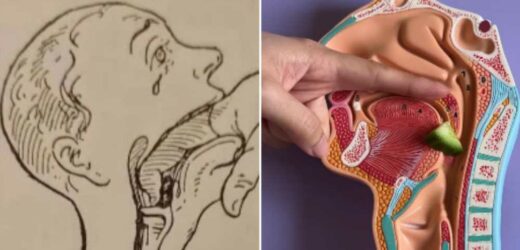WATCHING a child choke must be every parent's worst nightmare.
Your first instinct might be to stick your fingers into your little one's mouth to retrieve whatever is blocking their throat.
But first aiders from a parenting education group have explained exactly why you should never do this.
In a short video, shared on Instagram, experts from Tiny Hearts Education can be seen trying to scoop a piece of cucumber from the throat of an anatomy mannequin.
"By blindly sticking your finger in, you could push [the item] back further," they said.
Previously, former paramedic and mum Nikki Jurcutz, who runs the page, said the first thing parents should do in this instance is call 999.
Read more on first aid
I’m a first aider and here’s why a ‘no coat in the car rule’ could save lives
I’m a paramedic – here’s why you need a bottle of BEER in your first aid kit
It's best to get this step out of the way as soon as possible, she explained.
The NHS advises to do the same, but to remember to put your phone your speakerphone so your hands are free.
Nikki also warned parents not to hang their child upside down when they're choking.
According to the Red Cross, this action "may also move the object further down their throat".
Most read in Health
I'm a nutritionist – here's 3 foods that work like Wegovy weight-loss jab
Dame Debs' family & friends pay special tribute almost a year after her death
I'm a GP – here's how NHS Wegovy weight-loss jabs can help you shed pounds
I woke up and couldn't pee – I looked 6 months pregnant andwas in agony
What to do if your child chokes
So what should you do?
The NHS says that if you can see an object lodged in your child’s mouth, you should take extreme care to remove it because blindly poking at it could make things worse.
If the child is coughing, encourage them to continue to do so as they may be able to bring the object up.
But never leave them unattended while they do this.
If the coughing isn’t effective (it is silent or they cannot breathe properly), shout for help immediately.
If the child is still conscious, use back blows.
First aiders at St John Ambulance give the following advice based on the child’s age.
Baby
- Slap it out:
- Lay the baby face down along your thigh and support their head
- Give five back blows between their shoulder blades
- Turn them over and check their mouth each time
2. Squeeze it out:
- Turn the baby over, face upwards, supported along your thigh
- Put two fingers in the centre of their chest just below the nipple line; push downwards to give up to five sharp chest thrusts
- Check the mouth each time
3. If the item does not dislodge, call 999 or 112 for emergency help
- Take the baby with you to call
- Repeat the steps one and two until help arrives
- Start CPR if the baby becomes unresponsive (unconscious)
Child
1. Cough it out
- Encourage the casualty to keep coughing, if they can
2. Slap it out
- Lean them forwards, supporting them with one hand
- Give five sharp back blows between the shoulder blades
- Check their mouth each time but do not put your fingers in their mouth
Read more on The Sun
Our road is so full of pot holes I have to take pain killers after driving home
Home Bargains shoppers are rushing to buy ‘brilliant’ £20 summer essential
3. Squeeze it out
- Stand behind them with your arms around their waist, with one clenched fist between their belly button and the bottom of their chest
- Grasp the fist in the other hand and pull sharply inwards and upwards, giving up to five abdominal thrusts
- Check their mouth each time
Five warning signs your child is choking
It’s important you understand the signs of choking and how to help your little one if they are struggling.
Here are the five you should look out for:
- Unable to cough
- Completely silent, no air, no crying, no speaking
- Making desperate attempts to breathe
- Clutching at throat
- Skin changing colour
Source: Tiny Hearts Education
Source: Read Full Article












